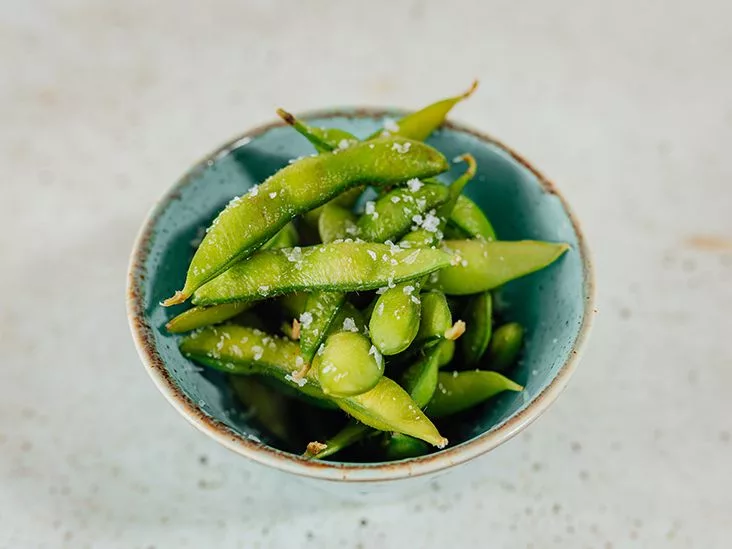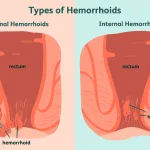Ever stare at a half‑cooked bowl of oatmeal or a plain salad and think, “I wish this had a little more protein?” You’re not alone. Adding protein to meals doesn’t have to be a chore, a pricey gourmet experiment, or a science‑lab affair. In the next few minutes you’ll discover simple tricks, cheap protein sources, and meal ideas that fit right into a busy life—no Ph.D. in nutrition required. Let’s dive in together and turn every bite into a satisfying, muscle‑friendly, satiety‑boosting experience.
Why Protein Matters
Protein is the body’s building block. It repairs muscle fibers after a workout, keeps you feeling full between meals, and helps balance blood sugar so you avoid those mid‑afternoon crashes. Most experts recommend 15‑20 g of protein per meal for the average adult (see the SELF article for a quick breakdown). Hitting that target consistently supports muscle maintenance, a healthy metabolism, and steady energy levels.
But, as with anything, moderation matters. Over‑loading on protein can strain kidneys for people with certain conditions and might displace other vital nutrients. The key is a balanced plate: protein + carbs + healthy fats. Think of protein as the sturdy foundation of a house—essential, but it works best when the walls (carbs) and roof (fats) are in place too.
Budget Protein Staples
If you’re watching the grocery bill, you’ll be glad to know that many high‑protein foods are also wallet‑friendly. Below is a quick glance at the cheapest ways to get 10 g of protein—a useful benchmark for most meals.
| Food | Protein per Serving | Typical Cost (USD) | Cost ÷ 10 g Protein |
|---|---|---|---|
| Eggs (large, 1) | 6 g | $0.15 | $0.25 |
| Canned tuna (½ cup) | 16 g | $0.80 | $0.50 |
| Dried lentils (½ cup cooked) | 9 g | $0.30 | $0.33 |
| Greek yogurt (½ cup) | 12 g | $0.70 | $0.58 |
| Cottage cheese (½ cup) | 14 g | $0.65 | $0.46 |
| Peanut butter (2 Tbsp) | 8 g | $0.20 | $0.25 |
| Tofu (¼ block) | 10 g | $0.60 | $0.60 |
| Black beans (½ cup cooked) | 7 g | $0.25 | $0.36 |
These staples live in most pantries or can be bought in bulk for even less. When you combine a few of them throughout the day, reaching the ideal protein target becomes effortless.
Easy Meal Boosters
Breakfast Hacks
Morning meals often fall short on protein, especially when oatmeal is the go‑to. Luckily, a handful of tweaks can turn a plain bowl into a power‑packed start.
- Peanut or sunflower seed butter – stir a tablespoon into cooked oats for an extra 3.5 g of protein and a comforting nutty flavor.
- Milk or fortified plant milk – cook oats in dairy, soy, or oat milk; each cup adds 7‑8 g of protein (OnePotWellness).
- Greek yogurt – swirl in ½ cup for about 12 g of protein and a creamy tang.
- Chia or hemp seeds – sprinkle a tablespoon; hemp gives roughly 10 g of protein per 3 Tbsp.
- Egg whites – whisk a couple into the oatmeal while it cooks for a fluffy, protein‑rich texture.
Pick one or two that you already have on hand. Your 5‑minute breakfast will feel more satisfying, and you’ll stay full until lunch without reaching for a mid‑day snack.
Lunch & Dinner Quick Wins
Here’s where the magic of “swap and upgrade” shines.
- Blend‑in sauces – add cottage cheese or Greek yogurt to soups, pasta sauces, or mashed potatoes. A half‑cup of cottage cheese sneaks in 14 g of protein while keeping the dish silky (Madison Malin).
- Base swaps – replace regular pasta with chickpea, lentil, or edamame pasta. One cup can deliver up to 20 g of protein.
- Grain upgrades – cook quinoa or brown rice in bone broth instead of water; the broth adds 5‑8 g of protein per cup.
- Egg‑white enrichment – fold extra egg whites into scrambled eggs, omelets, or stir‑fries. You’ll boost protein without adding extra fat.
Snack‑Time Protein Punch
Snacks are the perfect opportunity to sneak in a protein boost without feeling like you’re “eating a meal.”
- Roasted chickpeas or edamame tossed with a pinch of sea salt.
- Greek‑yogurt dip with sliced veggies or whole‑grain crackers.
- Half a cup of cottage cheese topped with berries or a drizzle of honey.
- A small handful of mixed nuts and seeds—especially hemp seeds, which pack about 10 g of protein per ounce.
Swap & Upgrade Tricks
1️⃣ Blend It In
Adding protein doesn’t have to change the texture you love. Blend it into the foods you already enjoy:
- Cottage cheese → creamy soups, potato salads, and even baked mac & cheese.
- Greek yogurt → dressings, marinades, and overnight oats.
- Bone broth → cook grains, stir into sauces, or use as a base for stews.
2️⃣ Swap the Base
Simple base swaps can add protein without extra effort:
- Egg‑white boost – add 2‑3 egg whites to any egg dish for an extra 7‑10 g of protein.
- Higher‑protein flour – use einkorn or chickpea flour for pancakes, flatbreads, or waffles.
- Protein‑packed dough – a quick three‑ingredient dough (flour, water, protein powder) works for pizza crust, bagels, or burger buns.
3️⃣ Upgrade Your Drinks
Even your beverages can be protein powerhouses:
- Collagen or gelatin – dissolve a scoop in coffee, tea, or a smoothie for a painless 10 g protein boost.
- Kefir – swap regular milk for kefir once a day; it offers more protein and gut‑friendly probiotics.
- Protein‑infused water – a dash of unflavored whey or plant protein powder blends well with flavored waters.
3‑Day Protein‑Rich Meal Plan
Day 1
- Breakfast: Greek‑yogurt parfait with hemp seeds and fresh berries (≈18 g).
- Lunch: Lentil‑quinoa salad tossed in bone‑broth vinaigrette; add a handful of roasted chickpeas (≈22 g).
- Dinner: Chicken stir‑fry with edamame and protein pasta (≈30 g).
Day 2
- Breakfast: Cottage‑cheese oatmeal stirred with peanut butter (≈20 g).
- Lunch: Tuna‑cottage‑cheese wrap with mixed greens and a side of roasted soybeans (≈25 g).
- Dinner: Turkey‑egg‑white chili topped with Greek yogurt (≈28 g).
Day 3
- Breakfast: Scrambled eggs + 2 extra egg whites + salsa (≈22 g).
- Lunch: Bean‑pasta salad with grilled shrimp and a drizzle of olive oil (≈27 g).
- Dinner: Baked tofu + quinoa‑broth pilaf + steamed broccoli (≈26 g).
All three days stay under $10 per day using the cheap protein staples listed earlier. Feel free to swap proteins (tofu for chicken, lentils for black beans) to match your taste preferences.
Common Pitfalls
Protein Overload
More isn’t always better. Consuming 50 g of protein at a single meal can lead to digestive discomfort and, for some, unnecessary calorie excess. Aim for 15‑20 g per meal and distribute the rest throughout the day.
Flavor Fatigue
Eating the same protein source daily can become boring. Rotate between eggs, dairy, legumes, fish, and plant‑based powders. Spice it up with herbs, smoked paprika, or a splash of citrus to keep things exciting.
Portion Guesswork
Visual cues help: a palm‑sized piece of meat, a half‑cup of cooked beans, or a single scoop of Greek yogurt each approximate 15 g of protein. A kitchen scale is handy, but these mental shortcuts work well once you practice.
Expert Tips & Quick Answers
How much protein do I really need per meal? The general rule of thumb is 15‑20 g for most adults. Adjust up if you’re highly active, aiming for muscle growth, or if you weigh more than 180 lb.
Can I meet my protein goal without meat? Absolutely. Pair a plant protein (beans, lentils, tofu) with a complementary grain (rice, quinoa) to create a complete amino‑acid profile.
What’s the cheapest way to add 10 g of protein? Two tablespoons of peanut butter, a half‑cup of Greek yogurt, or a single boiled egg all hover around $0.20‑$0.25 for that protein boost.
Do protein powders really help? They’re convenient, especially post‑workout or on busy mornings. If you can get enough protein from whole foods, powders become an optional supplement rather than a necessity.
Wrap‑Up: Your Protein‑Rich Journey Starts Now
Adding protein to meals doesn’t require a culinary degree or a grocery budget that rivals a restaurant’s. By using cheap protein sources, simple blend‑in tricks, and smart swaps, you can easily hit the 15‑20 g target at every meal—making you feel fuller, more energized, and ready to tackle whatever the day throws at you.
Pick one tip from each section, try it tonight, and notice the difference tomorrow. Got a favorite protein hack of your own? Share it in the comments—let’s build a community of tasty, budget‑friendly ideas together. And if a question pops up while you’re cooking, don’t hesitate to ask. Here’s to stronger meals and a stronger you!


















Leave a Reply
You must be logged in to post a comment.